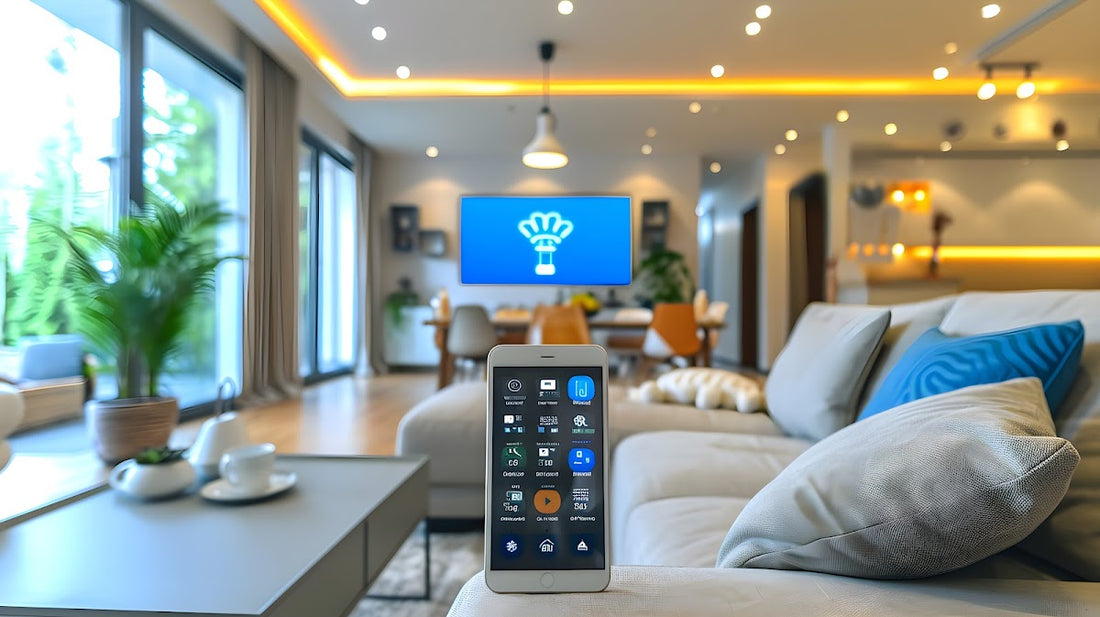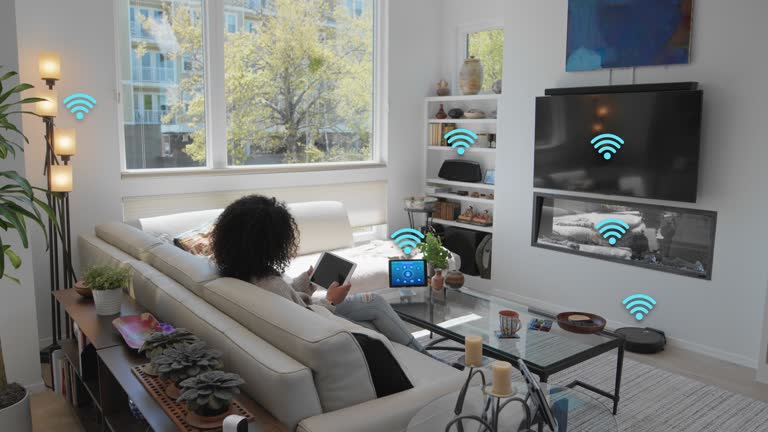
How to Set Up Automated Lighting Systems: A Guide for Tech Enthusiasts
Share
In the age of smart technology, setting up an automated lighting system is not just a luxury but a significant step towards energy efficiency and enhanced convenience. As a tech professional or enthusiast, understanding how to set up automated lighting systems could transform your living space into a smart home haven.
Automated lighting systems are designed to give you control over your home lighting through various devices and apps. This technology allows you to manage your lighting remotely, set schedules, and even integrate with other smart home devices. But how do you get started with setting up such a system? Lets dive into the essentials.

Understanding the Basics of Automated Lighting Systems
Before diving into the setup process, it's crucial to understand what an automated lighting system entails. Essentially, these systems consist of smart bulbs, switches, sensors, and a central hub that connects everything. These components work together to provide seamless control over your home lighting.
Smart bulbs are the heart of any automated lighting system. They come in various forms, including LED and Wi-Fi enabled options, allowing you to adjust brightness and color remotely. Switches and sensors add an extra layer of automation by providing physical control and automatic adjustments based on movement or time of day.
Selecting the Right Equipment
Choosing the right equipment is a critical step in setting up your automated lighting system. Consider factors like compatibility with existing smart home devices, ease of installation, and the specific features you require. Brands like Philips Hue, LIFX, and TP-Link offer a range of smart bulbs and switches that are popular among tech enthusiasts.
It's also important to select a reliable hub or bridge that can manage all your devices. This hub acts as the brain of your system, allowing for centralized control and integration with other smart home technologies. For more insights on selecting energy-efficient smart lighting solutions, you can explore this link.
Step-by-Step Guide to Setting Up Your System
1. Plan Your Setup
Start by assessing your lighting needs and deciding which areas of your home you want to automate. Consider high-traffic areas where automated lighting would provide the most benefit, such as the living room, kitchen, and entryways.
2. Install Smart Bulbs and Switches
Once you've planned your setup, begin by installing smart bulbs in the chosen areas. Replace traditional bulbs with smart ones, ensuring they are compatible with your hub. For additional control, install smart switches that can override manual switches.
3. Connect to a Hub
After installation, connect your devices to a central hub. This step often involves downloading a mobile app that pairs with the hub and guides you through the setup process. Once connected, you can control your lighting from anywhere using your smartphone or voice assistants like Alexa or Google Assistant.
4. Configure Settings and Routines
Now that everything is connected, it's time to configure your settings. Set up routines based on your daily schedule, such as turning lights on at sunset or dimming them for movie nights. Take advantage of sensor-based automation to turn lights on when you enter a room and off when you leave.
Advanced Tips for Tech Professionals
As a tech professional, you can take your automated lighting system to the next level by integrating it with other smart home technologies. Consider using platforms like IFTTT (If This Then That) to create custom automations that link your lighting with other devices, such as security systems or smart thermostats.
Additionally, explore options for integrating with green technologies. Automated lighting systems can significantly reduce energy consumption, contributing to a more sustainable lifestyle. For more about eco-friendly home automation, check out this resource.
Common Challenges and Solutions
Even with the best planning, you may encounter challenges when setting up your automated lighting system. Common issues include connectivity problems, compatibility conflicts, and difficulties in setting up routines. To overcome these challenges, ensure all devices are within range of your Wi-Fi network and are updated with the latest firmware.
If you face persistent issues, consider reaching out to online communities or forums where tech enthusiasts share solutions and offer support. You can also find troubleshooting tips in this article.
Conclusion
Setting up an automated lighting system can seem daunting at first, but with the right guidance and tools, it becomes an exciting project that enhances your home's functionality and efficiency. By following the steps outlined in this guide, you'll be well on your way to enjoying the benefits of smart lighting.

FAQ
1. What are the benefits of an automated lighting system?
Automated lighting systems offer numerous benefits, including energy savings, convenience, and enhanced security. They allow you to control lighting remotely, set schedules, and integrate with other smart home devices.
2. Can I integrate automated lighting with other smart home devices?
Yes, most automated lighting systems can be integrated with other smart home devices, such as security systems, thermostats, and voice assistants, providing a cohesive smart home experience.
3. Do I need technical expertise to set up an automated lighting system?
While some technical knowledge is beneficial, most systems are designed for user-friendly installation. Manufacturers provide detailed instructions and support to help you set up your system efficiently.
